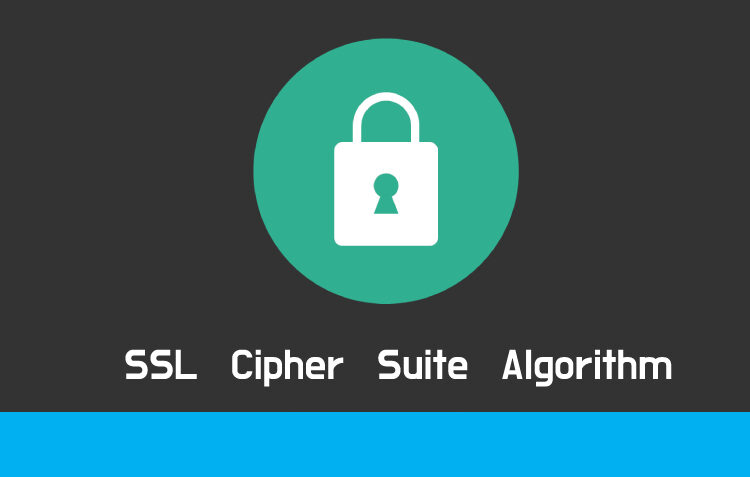Whenever we hear the word SSL, the very first thing that comes to our mind is something related to security. Well, you got it right, SSL Cipher is a term related to authentication only. So, what is an SSL cipher? SSL Cipher is a collection of commands that usually forms an algorithm to form a secure affiliation between the Client and the website’s server.
We all are already acquainted with the ‘What is an SSL certificate and SSL/TLS Handshaking’. But still, let’s take the old road and remember these topics. SSL (Secure Socket Layer) is the certificate required by any website as proof of its legitimacy and in order to gain secure connections between web browsers and the web servers. They are also known as website security certificates too.
These digital certificates are issued to the web servers by certain authorities known as CA (Certificate Authorities). They act as a third party for sanctioning the certificates in HTTPS to provide a secure platform for browsing.
SSL/ TLS Handshaking is a process that takes place when the client (web browser) is trying to form a connection with the website’s server. In plain terms, it is to and for communication between the web browser and web server. Its main purpose is to create an encrypted connection between the client and the web browser.
One last thing that should also not be skipped is ‘What is SSL cipher Suite?’ It is just another term used to describe SSL cipher. It is vital to recollect that cipher suites do not simply make sure security, but additionally the affinity and performance of the HTTPS connections.
What Contrives SSL Algorithm?
SSL Algorithm contrives of four components, namely,
– Key Exchange Algorithm
– Massive Data Encryption
Corroboration Algorithm
– Hashing Algorithm
Key Exchange Algorithm:
This algorithm uses the Symmetric Encryption method. There are quite a few transfer protocols available, through them the information can be transmitted privately, without the intervention of the traducers. The symmetric method uses isobilateral cryptographical keys, in order to encode as well as decode the data that is to be transferred.
This process happens once the initial authentication is finished. The reason for the invention of the Key Exchange algorithm was that the symmetric keys could be transmitted through the encrypted platform. Examples of a few Key Exchange Algorithms are Rivest-Shamir-Adleman (RSA), Diffie- Hellman (DH), and ECDH.
Massive Data Encryption:
This encryption algorithm because the information is quite bulky. This encryption takes place after the Key Exchange Algorithm. At the side of the alternative data, a key is generated that is called Bulk data key. That encrypts all the contents of the data present. There are some of the Bulk Data encryption algorithms present in the market, namely, Advanced Encryption Standard (AES), Camellia, and Triple Data Encryption Standard (3DES).
Corroboration key:
They are known as Authentication/ Digital Signature Algorithm. To perform its authentication, an internet server has to check for the identification of the recipient to sure that it is not one of the traducers. This process consists of inserting in a group of credentials together with a ‘Username’ and ‘Password’. Therefore, in accordance with taking out this process, the Cipher suite uses an authentication algorithm rule equivalent to RSA, DSA, and ECDSA.
MAC Algorithm:
It stands for Message Authentication Code Algorithm. This algorithm basically uses hashing Algorithm. It is a process of compressing the input data into data blocks with a particular length and certain type depending on the kind of algorithm one is using, making it easier for comparisons and storing.
Thus, taking less memory space but storing large files. Hash functions are found to be very useful in password authentication or verification. Now, what actually happens under this application whenever a client visits a website and web server asks for their ID and Password? Some of the MAC Algorithms are SHA, MD5, etc.
How to Check SSL Cipher Strength?
When checking for SSL Cipher Strength, we need to make out the weaker Ciphers and the strong ciphers. Well, it can easily be outlined, because during encoding/decoding of the data, the algorithmic processes that use a key of inadequate length, those cipher’s unveil the likelihood that encryption them can be broken and are known as Weaker Cipher.
Whereas stronger ciphers are usually outlined with those algorithms that has larger key lengths. Any Algorithmic processes that uses key sizes less than 128 bits are recognized as weak Ciphers. Many different configurations ways are available to remove the weaker cipher. The only issue with weaker cipher is that it does not provide high level security, that is needed by you but in some cases ven weaker ciphers are useful.
How to check out SSL Cipher Suite from looking?
DHE_RSA_AES256_SHA256
The above bold line is how SSL Cipher Suite looks like. Whenever, you see such a statement, you could easily know what it is. This above statement contrives of all the components as discussed above in SSL Cipher Algorithm.
DHE_RSA_AES256_SHA25
SHA25- MAC Algorithm
AES256 – Bulk Data Encryption code
RSA– Authentication Algorithm
DHE – Key exchange algorithm
Finally, Cipher was originated before we could know of it, although it came in technical field quite later yet its importance have not decreased even a bit. So, if you are a website owner, you should probably own one of the TLS/SSL ciphers to have higher security around your webpage, you could find many compatible and to your liking’s Cipher suite… Just like in ancient times messages were ciphered and made undecipherable likewise in the modern technical era it is also important to cipher the data from the traducer.


